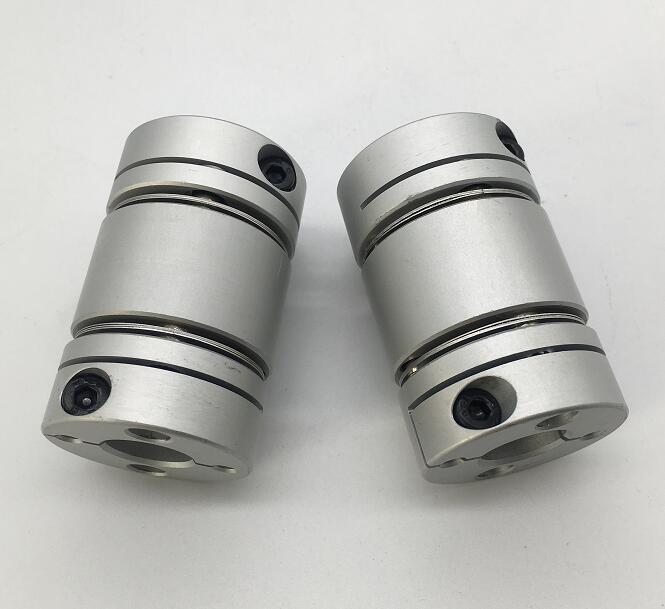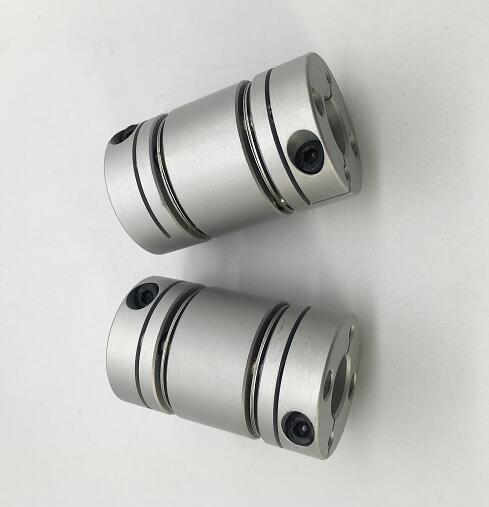What are the functional characteristics of the diaphragm coupling
What are the functional characteristics of the diaphragm coupling
What are the functional characteristics of the diaphragm coupling
What are the functional characteristics of the diaphragm coupling?
Diaphragm couplings use thin spring sheets (304 stainless steel sheets), and each group of diaphragms is made up of several sheets, which are connected with the two halves of the coupling by bolts or other connection methods to realize the elastic connection of the two shafts. The diaphragm coupling connects the two shafts (the driving shaft and the driven shaft) in different mechanisms to rotate together and transmit torque, so that it can buffer, reduce vibration and improve the dynamic performance of the shafting. , Relying on the elastic deformation of the diaphragm to compensate the relative displacement of the connected two shafts. It is a high-performance flexible coupling with strong metal components. It does not require lubrication. It has a compact structure, high strength, long service life and no rotation gap , It is not affected by temperature and oil pollution, and has the characteristics of acid resistance, alkali resistance and corrosion protection; powerful advantages: the diaphragm coupling has simple structure, no relative sliding, no lubrication, sealing, no noise, basically no maintenance, convenient manufacturing, and Partially replace gear couplings or other general couplings.

What are the functional characteristics of the diaphragm coupling?
1. Diaphragm coupling is an elastic soft coupling, there are many elastic diaphragm connections in the middle, the main function is to protect the equipment; and it is to relieve the maximum torque caused by the moment of inertia;
2. Several groups of diaphragms (stainless steel sheets) are alternately connected with the two halves of the coupling with bolts. Each group of diaphragms is made up of several pieces. The diaphragms are divided into connecting rod type and different shape of the whole piece type. The diaphragm coupling relies on the elastic deformation of the diaphragm to compensate for the relative displacement of the connected two shafts. It is a high-performance flexible coupling with strong metal elements, no lubrication, compact structure, high strength and long service life. .
3. Whether the size of the unbalance of the diaphragm coupling can meet the needs of any kind of rotating system depends on the performance of each special connected machine, and it is best to be determined by the manufacturer of the connected machine. It is recommended that while providing its equipment, a suitable flexible diaphragm coupling balance should also be drawn up.
4. The chooser of the diaphragm coupling should choose the appropriate balance level of the diaphragm coupling, the rigidity of the bearing, bearing seat, and the base: the mechanical transmission system has a flexible base or bracket for the rotating parts, which is suitable for the diaphragm coupling. The unbalanced state of the shaft is more sensitive.
5.Axial deviation of the diaphragm coupling: If the shaft extension or flexibility of a certain machine is long, it is more sensitive to the unbalanced state of the diaphragm coupling. The relationship between the bearing load caused by the weight of the diaphragm coupling and the total bearing load: If a machine uses a light-loaded bearing or a diaphragm coupling load is basically caused by the cantilever load of the diaphragm coupling, this Machinery is more sensitive to the unbalanced state of the coupling. Mechanical devices with cantilever rotors or cantilever loads are usually more sensitive to the unbalanced state of the coupling.

What are the functional characteristics of the diaphragm coupling?
1. The ability to compensate for the misalignment of the two axes is strong. Compared with the gear coupling, the angular displacement can be doubled, the reaction force is small during radial displacement, the flexibility is large, and certain axial, radial and angular directions are allowed Displacement.
2. It has obvious shock absorption, no noise and no wear.
3, adapt to high temperature (-80+300) and work in harsh environments, and can operate safely under shock and vibration conditions.
4. High transmission efficiency, up to 99.86%. Especially suitable for medium, high speed and high power transmission.
5. Simple structure, light weight, small size, convenient assembly and disassembly. It can be assembled and disassembled without moving the machine (refer to the type with intermediate shaft), and no lubrication is required.
6. It can accurately transmit the speed without slip, and can be used for the transmission of precision machinery
What are the functional characteristics of the diaphragm coupling? To put it bluntly, the principle of diaphragm coupling is relatively simple. Like ordinary couplings, they are mechanical parts that are connected to the working machine to rotate together to transmit torque. However, in high-speed and heavy-load power transmission, some couplings have buffers, The diaphragm coupling is more suitable to reduce vibration and improve the dynamic performance of the shafting. It has high torque rigidity, zero backlash, and elastic body compensation for the radial, axial, and angle generated by the two shafts in the transmission process of manufacturing machinery. Deflection, clockwise and counterclockwise rotation characteristics are equal characteristics. It is sufficient to prove its reliability. The diaphragm coupling can compensate for the axial, radial and angular deviations between the active machine and the driven machine due to manufacturing errors, installation errors, load-bearing deformations and the effects of temperature rise changes. It is an ideal product to replace gear couplings and general couplings.





